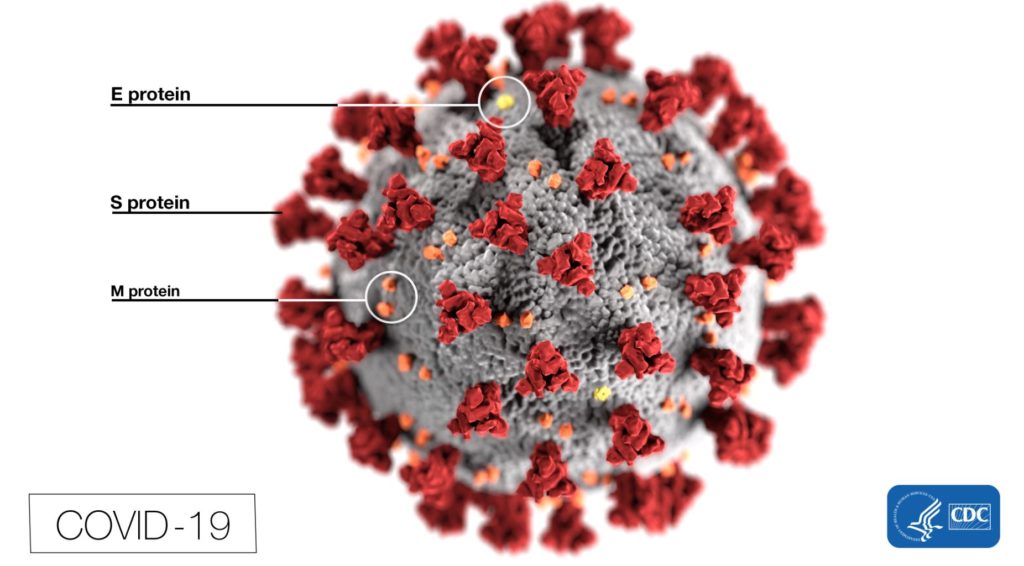Is coronavirus worse than the flu?

Much worse.
That’s ridiculous.
And that’s not a question.
Well, why should I trust you — or the media hysterics you’re parroting?
Don’t trust me, and certainly don’t trust the media. Trust the evidence.
You’re right about the media, by the way: just a few weeks ago, the media was actively pooh-poohing experts it now considers authorities, condemned President’s Trump’s excellent, prescient China travel ban (which bought us weeks of needed time) as a racist stunt, and kept telling us that we should worry about the flu more than we should worry about coronavirus. Michael Brendan Dougherty got pilloried as a sexist on Twitter for pointing out what is now a commonplace: our society lacks the flexibility to close schools because so many families have both parents in the workforce.
The media position swung, immediately and completely, minutes after reporters started to realize that the Centers for Disease Control had bungled the rollout of covid tests. (This has indeed proved to be an extremely damaging error.) The media recognized it now had an anti-Trump hook for this story, and that was the moment the media decided that coronavirus was actually worse than the flu after all.
So, yeah, forget the media.
And me, too. I’m just some guy, and, full disclosure, I’m not exactly the President’s biggest fan, either.
But trust the evidence.
There’s a ton of data about this pandemic now. I didn’t trust the numbers coming out of China, but the WHO sent in a team of skeptics, and they came away mostly convinced that China was on the level about their case and fatality counts. Besides, China’s basic data on infectiousness and fatality has been replicated in half a dozen countries by now. And I don’t believe Italy or Taiwan is cooking their books — certainly not in the same way, and certainly not in a way calculated to influence U.S. politics. Italy did not destroy its own economy to hurt President Trump.
Also trust first-person accounts — ones that reach past the media narrative (whatever it happens to be today) and just report what people in the heart of the epidemic are seeing. Back when American media was insisting that covid was no big deal, I was watching first-person videos from Wuhan residents that had been ported to YouTube and subtitled. The picture they painted was dire indeed. Today, it’s easier to find people in the heart of the Seattle and NYC and Italy outbreaks who can give you the straight dope from their streets and their hospitals.
And trust the experts. Not the media “experts” who get trotted out to reinforce whatever the narrative is right now, but the experts who have been on this since day one and who have consistently been on the ball about what covid could mean for us. I suggest Eric Feigl-Ding, Trevor Bedford, Scott Gottlieb, and Tom Frieden as a starter pack. These guys have been way ahead of the news cycle… and, thanks to them, so have I.
Okay, whatever. People who’ve survived coronavirus say it’s a lot like the flu. So what’s the big deal?
Well, first up, the flu is a very big deal. Every single year, billions of dollars are spent developing vaccines and deploying them to as many people on Earth as possible. Even though those vaccines are only moderately effective, the entire global medical establishment spends three months, every single year, doing nothing but shouting, “PLEASE GET YOUR FLU SHOTS” at the top of their lungs.
They do this because thousands of hospital beds are filled, every single winter, by flu patients. And plenty of them die. Influenza and pneumonia are the 8th leading cause of death in the United States — the only infectious disease currently in the Top 10.
COVID-19, the Wuhan coronavirus, is much worse.
Okay, smart guy. Swine flu killed 12,000 Americans. Coronavirus has killed 60. So how is it so much “worse”? What am I missing?
What you’re missing is the fatality rate (as opposed to the fatality count).
Not very many people have died of covid (yet), because not very many people have been infected by covid (yet). Why not? Because almost every government in the world is fighting really really hard to protect people from being infected.
We could stop all those measures and just allow covid to spread like swine flu. Let’s see how that would work out.
The CDC estimates that swine flu infected one out of every five Americans over the course of one year. And it killed 0.02% of the people it infected, for a total of 12,000 dead.
Under ideal circumstances, the covid virus appears to kill about 0.6% of the people it infects. That’s how many people it is killing in South Korea, which has done extensive and widespread testing to make sure that they are not underestimating the number of mild cases. South Korea has also imposed strict controls to prevent covid from overwhelming its top-notch health care system, and has more hospital beds per capita than just about anyone (including the U.S.).
There are 327 million Americans. Let’s say covid infects one in five Americans, just like swine flu. And then let’s say it kills 0.6% of the infected, just like in South Korea.
That’s 392,400 deaths. 32 times as bad as swine flu.
Under ideal circumstances.
Why do you keep saying “under ideal circumstances”?
Because our conditions are not likely to be ideal.
First, coronavirus appears to be somewhat more infectious than swine flu. Swine flu reached one in five Americans. It’s possible covid, left unchecked, would do the same… but that’s on the lower end of plausible estimates. The Spanish Flu of 1918 infected nearly one in three Americans. The Hong Kong Flu of 1968 infected nearly four in ten Americans.
Epidemiologists believe that covid, left to its own devices, could plausibly infect as few as 20% Americans… or as many as 60% of us.
We simply don’t know yet how infectious covid really is, but “swine flu” would be on the optimistic end. If it infects 60% of Americans instead… well, that’s 327 million Americans times 60% infection rate times 0.6% fatality rate = 1.2 million dead Americans.
This number is roughly in line with worst-case scenarios from the CDC and other public health experts.
But that’s not the thing that really scares me. It could get so much worse than that.
Wait, how can it get worse than a WORST-CASE SCENARIO?!
Neither of the worst-case models I just mentioned appears to account for the possibility that America’s hospital system will be overwhelmed. They assume that there are going to be hospital beds and ventilators for all the covid patients who need them.
Unfortunately, that’s almost certainly not the case. Without strict containment measures, covid sweeps through the population so quickly, and requires such dramatic and sustained medical intervention to keep people alive, that the hospitals literally run out of beds, ventilators, and basic equipment like face masks (which means they start running out of doctors and nurses a few days later).
We saw this in Wuhan, then Iran, then in Italy. Patients literally die of covid in the waiting rooms or on the floors, waiting for access to a ventilator, or even basic treatment. Doctors are forced to decide who lives and who dies. There are no doctors or beds left to treat people who come in for non-covid reasons, like car accidents or cancer. A lot of people die who could have been saved, simply because there aren’t resources to help them.
Under these less-than-ideal circumstances, covid’s fatality rate jumps from <1% to something like 4.5%.
If covid infects 20% of Americans, but kills 4.5% of them, you end up with 3 million dead.
That’s about 250 times worse than swine flu — and far worse than America’s leading causes of death, heart disease and cancer, combined.
But that is where the U.S. is headed, even though the models don’t appear to account for it. (Yet.)
Aren’t they working on a vaccine?
Yep. And I’m confident we’ll have it… in about a year. Some effective antiviral therapies could emerge before then. Pray that they do.
But right now? For all our vast technological expertise, we’ve got nothing.
Not a single person on Earth ever caught covid before October 2019, so there is absolutely zero natural immunity in the population. No vaccine means zero artificial immunity, either. This thing is poised to rip through us, and there is nothing we can do except lock the doors and wait for the Angel of Death to pass over us.
What can we do, then?
I just told you: lock the doors and wait for the Angel of Death to pass over you. Did you think I was kidding?
The CDC’s euphemism for this is “social distancing.”
This helps! Nations that have implemented harsh containment measures have seen immediate reductions in the rate at which the covid pestilence grows. Some countries that got hit early and implemented tough measures right away are seeing few or no new cases.
But it’s all pointless if you morons go out and “partay hartay” anyway. You stupid, f–
Excuse me?
Sorry. I lost my temper.
But, really, once there are cases in your community, you really should not be gathering in public or with large groups. Malls, zoos, sports, are all verboten. As much as possible, you should be at home–and you shouldn’t be hosting more than the smallest gatherings of friends and family (nor attending them). Work from home if at all possible. Get delivery or take-out instead of visiting restaurants, if you must order out at all. Give serious consideration to pulling your kids out of school — by the time covid is detected in your school, it’s too late to protect your children (and therefore you) from exposure.
Don’t mess with this. Even if you don’t kill yourself, you could easily kill someone you love.
That’s a tiny bit true of flu, too, yeah, and, yeah, you should get your flu shot. But the Wuhan coronavirus is not the flu. It’s going to kill an unthinkably large number of people worldwide. Make sure you and — more to the point — your elderly parents aren’t among them.
UPDATE:
Something isn’t adding up. China has 1.5 billion people, but only 3,000 dead of coronavirus. You’re projecting that the USA, a country of 300 million, could lose 500,000 to 1 million people (or more). I have my doubts.
Two days after China passed 100 diagnosed cases, they completely locked down Hubei province — an area with the population of California. People weren’t allowed to leave their houses more than once per week. Private cars were banned. Quarantine was forcibly — and brutally — enforced. Drones were (allegedly) launched with temperature sensors to monitor whether locked-in residents had developed fevers. Apartment building doors were soldered shut.
Within a week, China did the same thing in hundreds of other cities and provinces, placing over 300 million people (roughly the population of the entire United States) under significant movement restrictions.
It was by far the largest and most dramatic quarantine in human history.
…and it appears to have worked.
We can expect to see similar results if and when we start arresting people for being on the streets without a good reason. Until then, brace for impact.






